The Crooked Room: Representations of Black Women in Film, Spring 2023
Professor: Jameka Hartley, Ph.D.
Screening Sketch Portfolio
Professor: Jameka Hartley, Ph.D.
Screening Sketch Portfolio
My intention in taking this course is to contextualize my own standpoint with my own experiences within a larger conversation that extends beyond my communities. While I can speak from my existence as a racialized, sexualized, and gendered Queer Indigenous body, I cannot speak on the experiences of all members of these communities nor can I speak to the individual experiences of other groups. I specifically find myself interested in the interconnections between various groups and these experiences as they relate to colonization and white supremacy. How might these experiences change? How might these experiences present similarities? How do we as various groups combat these homogeneous narratives?
It is essential to recognize that our individual experiences cannot speak on behalf of an entire group, community, or population of Black Indigenous People of Color nor can they represent us to the fullest extent. American academic Patricia Collins writes “Each group speaks from its own standpoint and shares its own partial, situated knowledge. But because each group perceives its own truth as partial, its knowledge is unfinished…Partiality and not universality is the condition of being heard; individuals and groups forwarding knowledge claims without owning their position are deemed less credible than those who do…Dialogue is critical to the success of this epistemological approach” (236-237). Understanding that there is no single experience that can be claimed as the overarching representation of these communities is the awareness of accepting partial truths as reality.
Each film presented in the course acts as a depiction of certain partial standpoints and provides the audience with a glimpse into the experiences of these groups. Movies like Foxy Brown portray a stereotypical, sexualized, and racist depiction of an Angry Black Woman while other films such as Eve’s Bayou bounce between the dynamic relationships of a Black family in Louisiana. Whether we deconstruct these films based on the writing, directing, storytelling, or portrayal of Black Women in the film there remains a critical conversation to follow. These partial standpoints are abstract allusions of authentic representations as films are scripted, edited, and fundamentally altered at their core. This is not to say that we as an audience cannot learn from the stories on screen, but we must acknowledge the inherent forgery of certain realities. Once we recognize the limitations and artistry of the film, then we are able to understand and engage with the larger conversations of the specific topics movies attempt to represent.
Collection - Sophia Francesco & Audra Grays
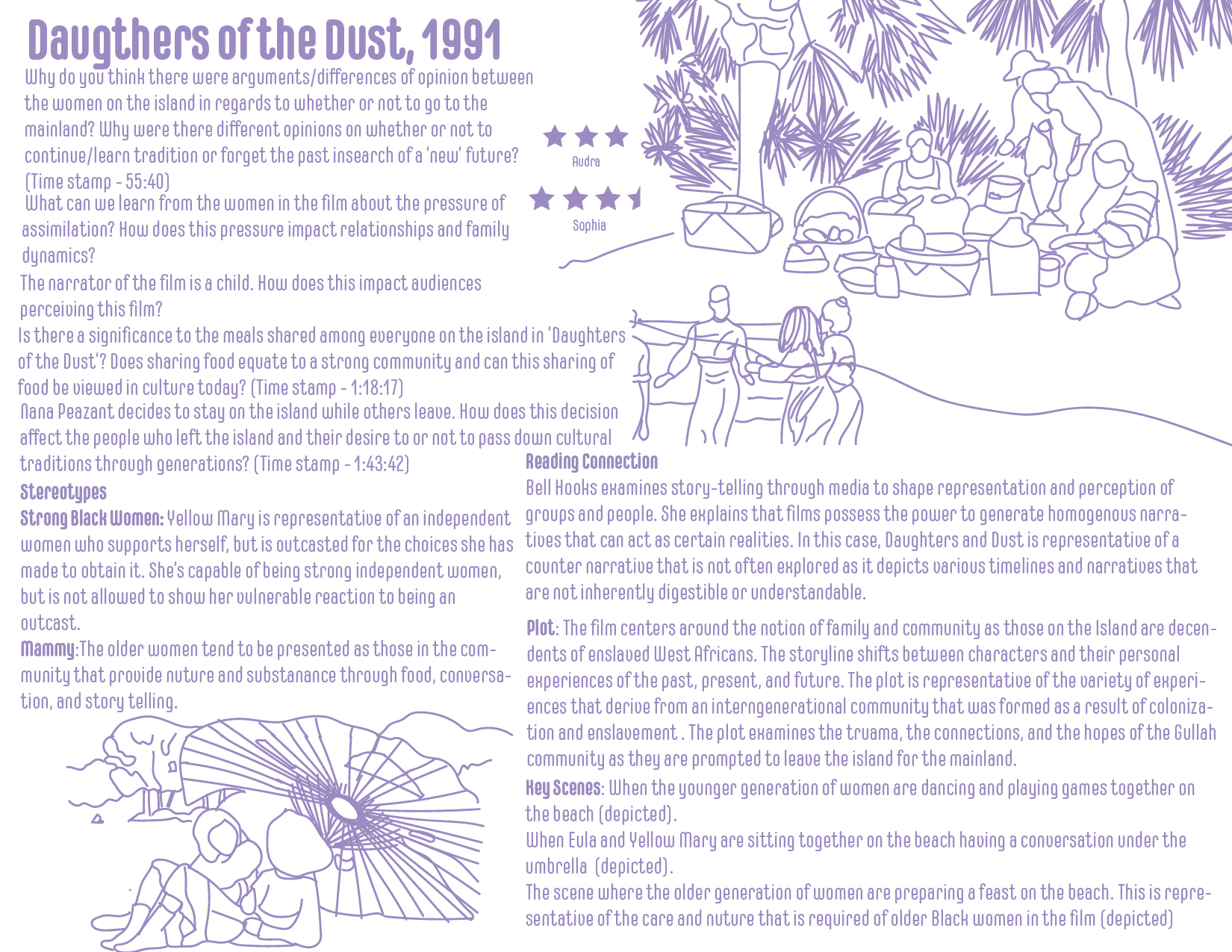


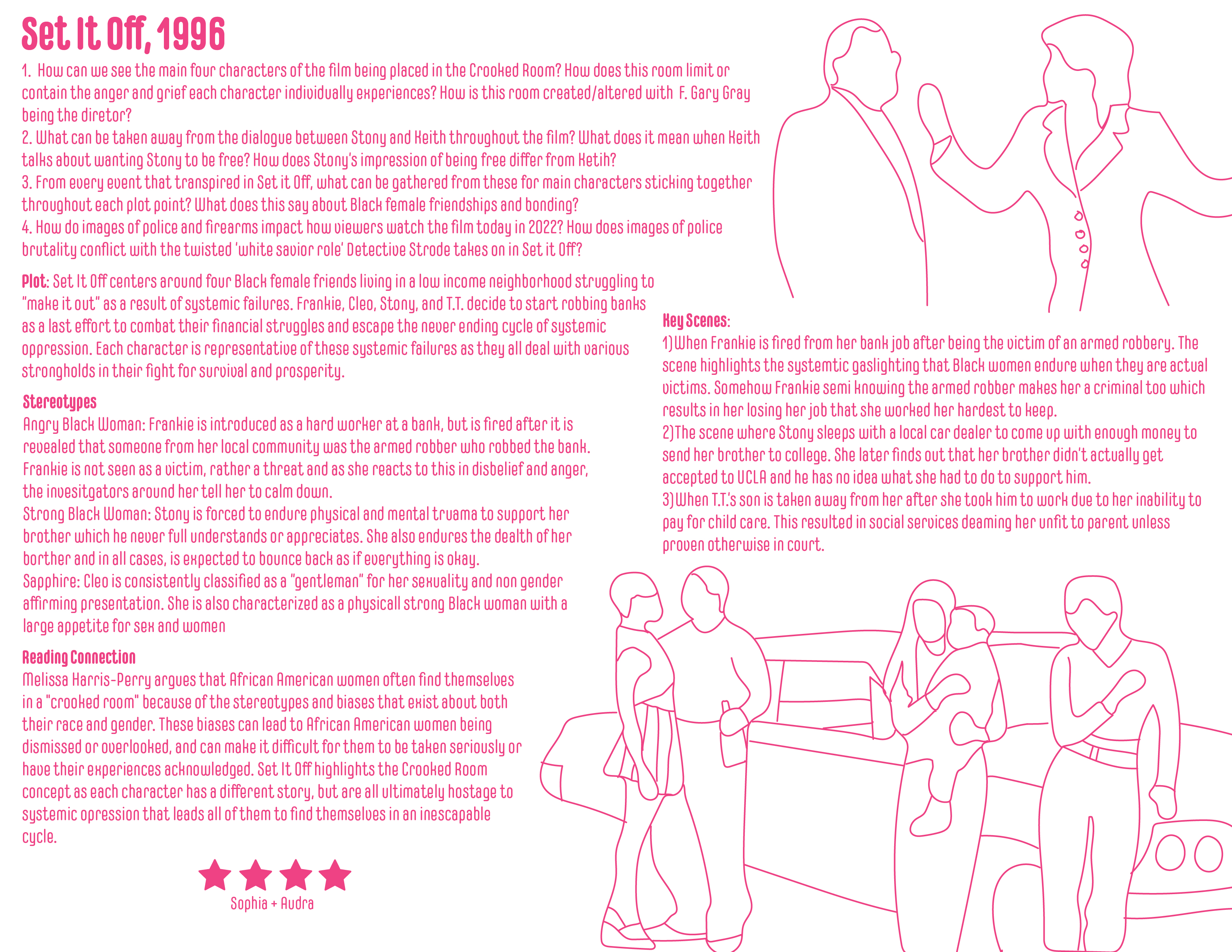
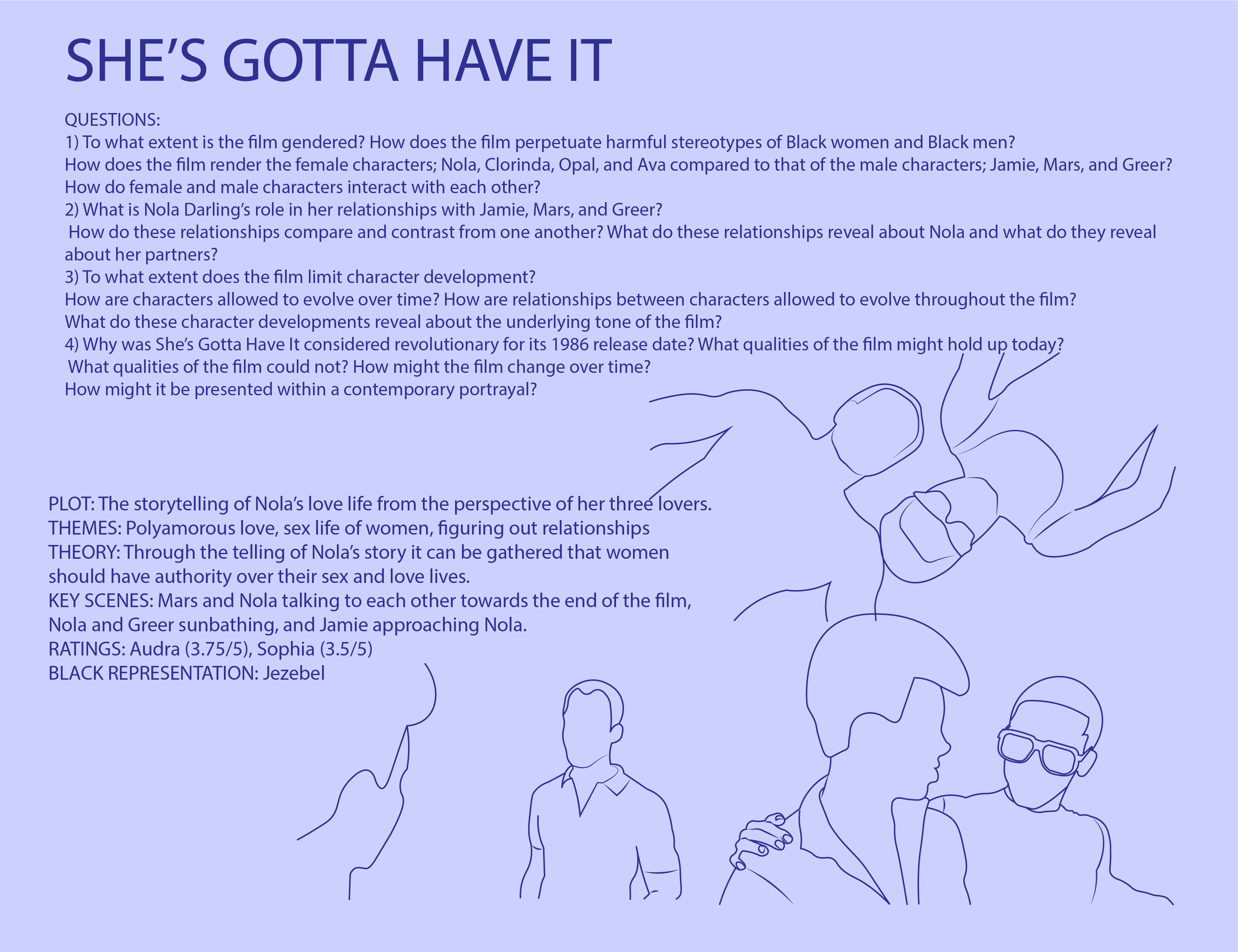

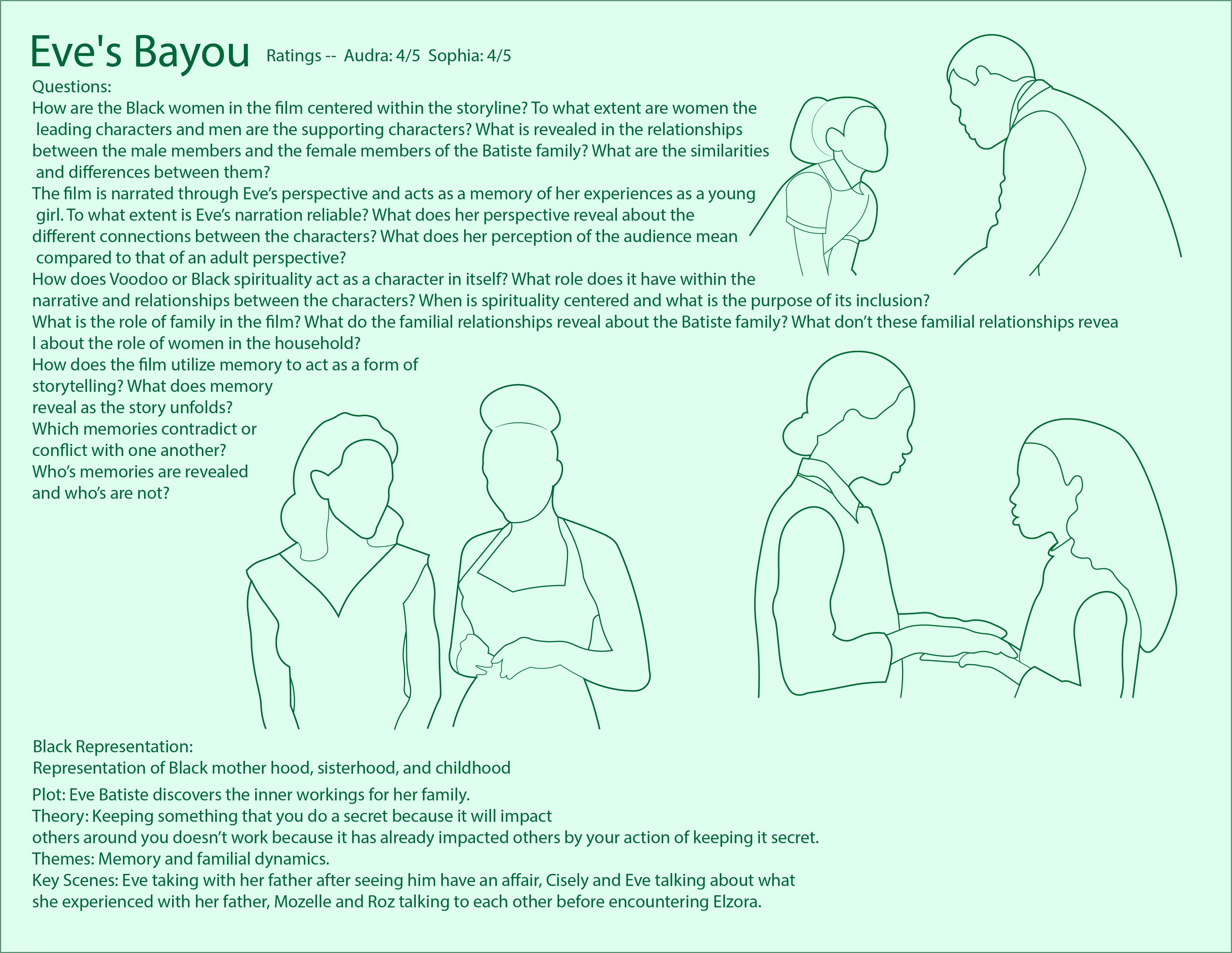
Daughters of the Dust, 1991
Daughters of the Dust is written by Black American film director Julie Dash to act as a reimagining of how Black women are portrayed on screen in historical and contemporary life. The film centers around the notion of family and community as the population on the Island are the descendants of enslaved West Africans.
The storyline shifts between characters and their personal experiences of the past, present, and future. Yellow Mary is representative of an independent woman who supports herself but is outcasted for the choices she has made to obtain it. She’s capable of being a strong, independent woman, but is not allowed to show her vulnerable reaction to being an outcast. In contrast, the older generation of women tends to be presented as those in the community that provide nurture and substance through food, conversation, and storytelling. Not only do these women act as mother figures, but they also serve as historical archives of the community’s past and counter the desire to leave the security of the island.
Much like contemporary generational family dynamics, Daughters of the Dust examines the security of the known and suspicion of the unknown.

Key scene: When Eula and Yellow Mary are sitting together on the beach having a conversation under the umbrella.

Key scene: When the younger generation of women are dancing and playing games together on the beach as a sign of hope for the future.
In the chapter Movie Magic, Bell Hooks examines story-telling through media to shape the representation and perception of groups and people. She explains that films possess the power to generate homogenous narratives that can act as certain realities. In this case, Daughters of the Dust is representative of a counter-narrative that is not often explored as it depicts various timelines and narratives that are not inherently digestible or understandable.
The plot is representative of the variety of experiences that derive from an intergenerational community that was formed as a result of colonization and enslavement. The audience is not limited to one leading character. We are introduced to various members of the Gullah community to spark a larger glimpse into the differing experiences and outlooks amongst the family. Unlike other films we watched, Daughters of the Dust does not settle for singularity and prompts the audience to consider the various factors that the group toils with throughout the film.
Daughters of the Dust examines the situated knowledge of the Gullah community members who share experiences stemming from generational trauma, complex family dynamics, and the community aspirtations. These experiences ultimately spark dialogue regarding Black women in Black family relationships, Black communities, and Black history.
Love and Basketball, 2000
However, their relationship cannot be analyzed without the contrasting experiences each character faces as the story progresses. It is clear that both characters experience various emotions along their journey, yet Moncia’s emotional reactions to basketball games and personal performance is characterized as her losing control. Monica is prompted to better control her emotional responses throughout the film while her male counterpart is never apprehended for his emotional outbursts. It is interesting to consider Monica and Quincy through a heteronormative sense as these characters reinforce gender stereotypes and gender roles. Even with similar aspirations and deriving from the same community, these characters contrast in the way society views them and with how they function with one another. Monica is first portrayed as the stereotypical angry Black woman as she reacts with emotion and she is never given the character development to reshape this narrative. It is almost ironic to contrast Quincy’s lack of emotional maturity and reliance on Monica to unpack his feelings as he is incapable of doing it alone.
Love and Basketball does fulfill the Black version of When Harry Met Sally as it depicts a coming-of-age romance all in the name of basketball. The film follows Monica and Quincy as the stereotypical heteronormative leads that play off of one another through gender roles. It is clear that the film lacks the ability to provide a counter-narrative beyond Black representation, but it does highlight how Black women are not only presented as stereotypes of their race, but of their gender too.

1. Why are Monica’s emotional reactions to basketball games and personal performance seen as losing her head? To what extent are her emotions invalidated/validated by other characters throughout the film? (Timestamp - 20:54)
2. How are Black women represented throughout the film in terms of conventional gender norms? To what extent are these standards depicted in the character development and relationships of female characters? How do women interact and react to one another when they are presented as “fast”, “hoochie”, etc. (Timestamp - 21:52)
3. How is Monica and Quincy’s relationship representative of a heteronormative relationship? To what extent do they act as inverses of one another? In what ways does their support for each other differ depending on their role in the relationship? (Timestamp - 52:39)
4. Quincy and his father’s relationship drastically shifts after it is revealed he has been cheating on his mother. To what extent are Black women considered disposable as a result of men’s actions? How does Quincy’s father justify and excuse his personal actions as “part of the game”? (Timestamp - 1:14: 46)
5. How are family dynamics explored in the film? How does the relationship between Monica and her mother develop from the beginning to the end of the film? How does their conversation in the kitchen reinforce labor of black women in families and households? (Timestamp - 1:36:33)
Foxy Brown, 1974
Foxy Brown is directed by White American Film director Jack Hill who captures an oversexualized female lead that only has the goal of avenging the men in her life. After Foxy’s boyfriend Mr. Anderson and her brother are murdered by the local mob, the film centers around her desire for revenge. Foxy portrays herself as an escort to sneak into the mob and find those responsible for the murders. She is continuously highlighted as a sexual figure that uses her body to obtain information and access these spaces. The film represents Black women in the same exact manner and does not allow them to develop as the story progresses.
Foxy is portrayed as the Angry Black Woman multiple times as she is destructive and reactive. Her character is presented as one-dimensional and incapable of expressing emotion without anger. After she finds out that her brother ratted her boyfriend Mr Anderson out, she goes to his house with a gun. She proceeds to threaten her brother and destroy his apartment as a result of her rage.
Foxy is also portrayed as a Strong Black Woman as her resilience does not allow for vulnerability. Somehow none of the traumatic events displayed throughout the film impact her or her journey for revenge. There is never a moment of weakness and the overarching goal remains the same.

Key scene: Foxy shoots Katherine, but decides to let her live so she will feel the same pain she felt losing the people she loved.

Key scene: Monica and Claudia are paired with the Judge as escorts and arrive at a hotel room full of white men.
Foxy can also be cast as the Jezebel as she is labeled promiscuous and sexually aggressive. Not only does Foxy exploit her body as a tool, but she is also equally exploited and sexualized by others. From trying to sneak into the mob as a prostitute to being held captive and sexually assaulted, Foxy remains to be an object throughout the film.
Stuart Hall's essay What is this 'black' in black popular culture? highlights how Black popular culture is produced and consumed through media to represent Black people. The reading examines how media attempts to target Black and non-Black audiences which ultimately leads to a disconnectedness and stereotypical attempts at representation. These representations are based on the power behind the production and the types of stories that unfold on screen.
Foxy Brown demonstrates how the media is representative in upholding stereotypes while highlighting certain aspects of realities for the time period. It is true that stereotypes derive from an aspect of reality as the power dynamics behind that stereotype are based on White Supremacy. The 1974 film is representative of the white male director behind the camera and the overarching white male gaze that the film is captured through. The film generates conversation regarding the racialization, sexualization, and gender stereotyping of Black Women and within representation in media.
Stuart Hall's essay What is this 'black' in black popular culture? highlights how Black popular culture is produced and consumed through media to represent Black people. The reading examines how media attempts to target Black and non-Black audiences which ultimately leads to a disconnectedness and stereotypical attempts at representation. These representations are based on the power behind the production and the types of stories that unfold on screen.
Foxy Brown demonstrates how the media is representative in upholding stereotypes while highlighting certain aspects of realities for the time period. It is true that stereotypes derive from an aspect of reality as the power dynamics behind that stereotype are based on White Supremacy. The 1974 film is representative of the white male director behind the camera and the overarching white male gaze that the film is captured through. The film generates conversation regarding the racialization, sexualization, and gender stereotyping of Black Women and within representation in media.
Precious, 2009

Set It Off, 1996
Set It Off is directed by Black American film director F. Gary Gary and centers around four Black female friends living in a low-income neighborhood struggling to “make it out” as a result of systemic failures. Frankie, Cleo, Stony, and T.T. decide to start robbing banks as a last-ditch effort to combat their financial struggles and escape the never-ending cycle of systemic oppression. Each character is representative of these systemic failures as they all deal with various strongholds in their fight for survival and prosperity.
Melissa Harris-Perry argues that African American women often find themselves in a "crooked room" because of the stereotypes and biases that exist about both their race and gender. These biases can lead to African American women being dismissed or overlooked and can make it difficult for them to be taken seriously or have their experiences acknowledged.
Frankie is introduced as a hard worker at a bank but is fired after it is revealed that someone from her community was the armed robber who robbed the bank. Frankie is not seen as a victim, but rather a threat, and as she reacts to this in disbelief and anger, the investigators around her tell her to calm down. In this case, Frankie is characterized as the Angry Black Woman in the context of the Crooked Room. The scene highlights the systematic gaslighting that Black women endure when they are actual victims. Somehow Frankie's semi-knowing the armed robber makes her a criminal too which results in her losing her job that she worked her hardest to keep.

Key scene: When Frankie is fired from her bank job after being the victim of an armed robbery.

Key scene: Cleo kissing her girlfriend outside with T.T. holding her son and Frankie leaning against the car.
Stony is portrayed as the Strong Black Woman who is forced to endure physical and mental trauma to support her brother which he never fully understands or appreciates. She also endures the death of her brother and in all cases, is expected to bounce back as if everything is okay. The scene where Stony sleeps with a local car dealer to come up with enough money to send her brother to college. She later finds out that her brother didn’t actually get accepted to UCLA and he has no idea what she had to do to support him.
Cleo can be classified as the Sapphire as she is consistently classified as a “gentleman” for her sexuality and non-gender-affirming presentation. She is also characterized as a physically strong Black woman with a large appetite for sex and women. To a certain extent, Cleo’s character is more indicative of the male gaze than Queer representation.
Set It Off highlights the Crooked Room concept as each character has a different story, but are all ultimately hostage to systemic oppression that leads all of them to find themselves in an inescapable cycle. Even with an attempt to escape the circumstances of their various lives, the film concludes with the tragic fate of all the characters through death or outcasting.
Cleo can be classified as the Sapphire as she is consistently classified as a “gentleman” for her sexuality and non-gender-affirming presentation. She is also characterized as a physically strong Black woman with a large appetite for sex and women. To a certain extent, Cleo’s character is more indicative of the male gaze than Queer representation.
Set It Off highlights the Crooked Room concept as each character has a different story, but are all ultimately hostage to systemic oppression that leads all of them to find themselves in an inescapable cycle. Even with an attempt to escape the circumstances of their various lives, the film concludes with the tragic fate of all the characters through death or outcasting.
She’s Gotta Have It, 1986
The audience is first introduced to Jamie Overstreet who presents himself as the “perfect guy” that Nola would be lucky to have as her only partner. Jamie piques Nola’s interest as he does not present himself like the typical man that attempts to pick her up. The next partner the audience is introduced to is Greer Childs who presents himself as the upper middle class catch. Greer claims Nola would be lucky to settle down with a man like him who could provide her with the stereotypical heteronormative relationship. The last partner to be introduced is Mars Blackmon who is a humorous man-child that looks to Nola for a fun time. He claims that Nola must have Daddy issues as she is not interested in settling down.
While the story revolves around Nola Darling and her partners, she is ultimately shaped by the descriptions that others give her than how she describes herself. Rather than focusing on the potential character development of Nola Darling, the film reinforces her existence through and by men.

1) To what extent is the film gendered? How does the film perpetuate harmful stereotypes of Black women and Black men? How does the film render the female characters; Nola, Clorinda, Opal, and Ava compared to that of the male characters; Jamie, Mars, and Greer? How do female and male characters interact with each other?
2) What is Nola Darling’s role in her relationships with Jamie, Mars, and Greer? How do these relationships compare and contrast from one another? What do these relationships reveal about Nola and what do they reveal about her partners?
3) To what extent does the film limit character development? How are characters allowed to evolve over time? How are relationships between characters allowed to evolve throughout the film? What do these character developments reveal about the underlying tone of the film?
4) why was She’s Gotta Have It considered revolutionary for its 1986 release date? What qualities of the film might hold up today? What qualities of the film could not? How might the film change over time? How might it be presented within a contemporary portrayal?
Diary of a Mad Black Woman, 2005
Diary of a Mad Black Woman is directed by Tyler Perry and focuses on Helen after she is left with nothing to her name when her husband decides to move forward with a divorce. She is forced to find herself and reconnect with her family that she had previously lost connection with. The story focuses on the power struggle between a bread-winning husband (Charles) and the want to be an American housewife (Helen).
Madea can be classified as the Sapphire as she and Helen come back to Charle’s mansion to pick up a few things and end up trashing the closet and living room. Not only does Madea encourage this behavior, but they both end up being arrested as a consequence of tearing the place up.
Deborah is presented as the Welfare Queen and antithesis to Helen’s character as she went down a completely different life path. She is presented as a drug addict and someone living off of the system. Her only redemption relies on her interaction with stereotypical standards such as religion and capital hierarchy.

Key scene: When charles kicks Helen out upon returning home with another woman. Helen reacts emotionally and refuses to leave the house while Charles holds his ownership and their lifestyle over her head.
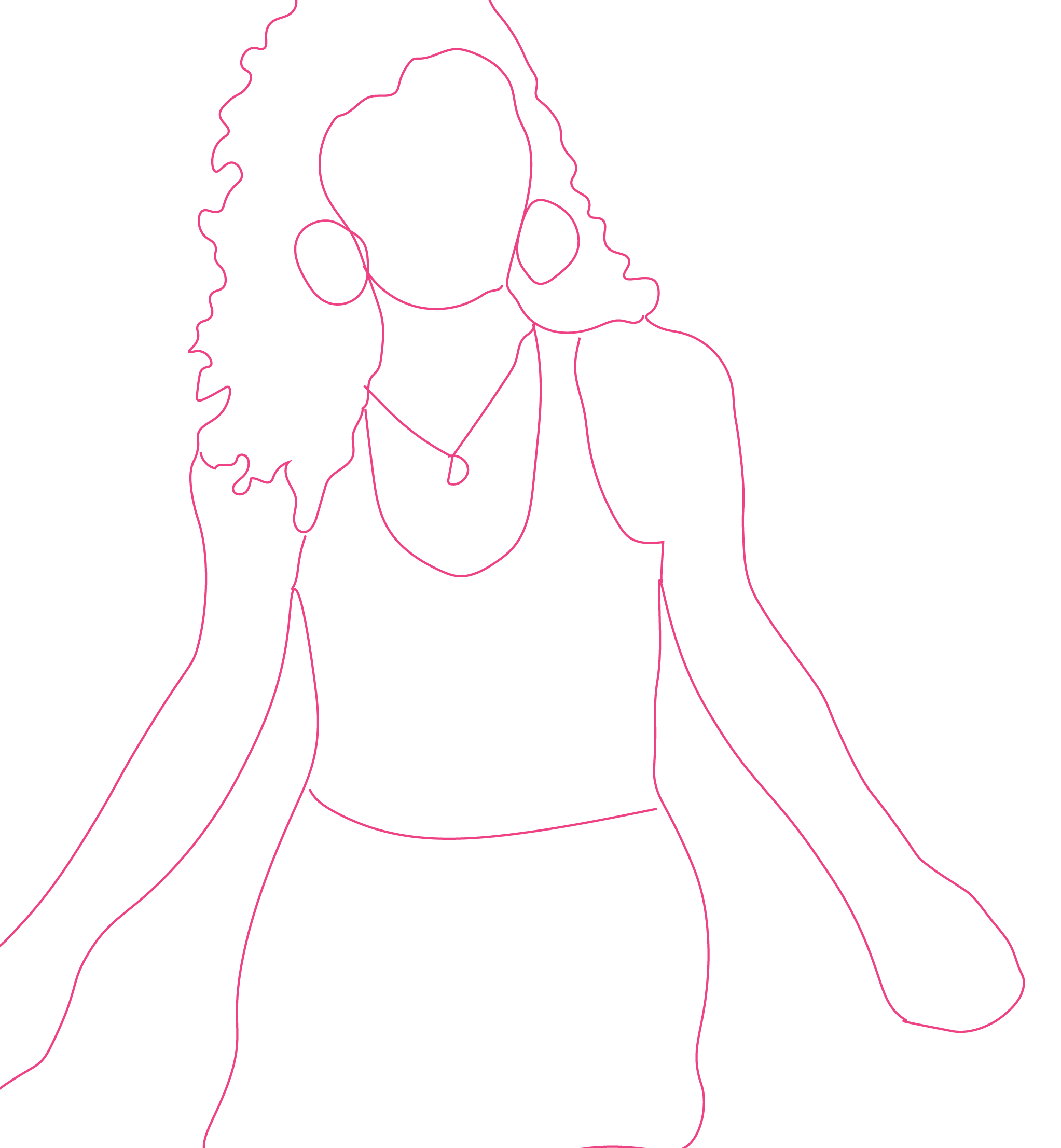
Brenda can be characterized as the Jezebel and as a home wrecker. She is a woman willing to destroy a relationship to gain the power of a wealthy man for herself. Helen even remarks “he will do this to you too” as she claims “I know how to gain and keep a man”.
After Madea was found in the closet destroying Brenda’s clothing and she comes in claiming “I am the owner of this house”. The scene highlights the entitlement to power upon being with a “powerful man”. She is not the owner of the house, but because she claims the status of being with Charles she gains the power to state ownership.
Diary of a Mad Black Women focuses on the theme of gender identity and gender roles. Women in the film rely on forms of power through masculinity, money, and religion to “save” or “take care” of them. Without these sources of power, women are left disposable as they cannot claim power alone. Even with Black women who are presented as headstrong, it is through stereotypical anger rather than empowerment. Anger becomes a narrative theme as many Black women are presented as emotionally singular as anger becomes the basis for decision-making.
After Madea was found in the closet destroying Brenda’s clothing and she comes in claiming “I am the owner of this house”. The scene highlights the entitlement to power upon being with a “powerful man”. She is not the owner of the house, but because she claims the status of being with Charles she gains the power to state ownership.
Diary of a Mad Black Women focuses on the theme of gender identity and gender roles. Women in the film rely on forms of power through masculinity, money, and religion to “save” or “take care” of them. Without these sources of power, women are left disposable as they cannot claim power alone. Even with Black women who are presented as headstrong, it is through stereotypical anger rather than empowerment. Anger becomes a narrative theme as many Black women are presented as emotionally singular as anger becomes the basis for decision-making.
Eves Bayou, 1997

Discussion Questions:
- How are the Black women in the film centered within the storyline? To what extent are women the leading characters and men are the supporting characters? What is revealed in the relationships between the male members and the female members of the Batiste family? What are the similarities and differences between them?
- The film is narrated through Eve’s perspective and acts as a memory of her experiences as a young girl. To what extent is Eve’s narration reliable? What does her perspective reveal about the different connections between the characters? What does her perception of the audience mean compared to that of an adult perspective?
- How does Voodoo or Black spirituality act as a character in itself? What role does it have within the narrative and relationships between the characters? When is spirituality centered and what is the purpose of its inclusion?
- What is the role of family in the film? What do the familial relationships reveal about the Batiste family? What don’t these familial relationships reveal about the role of women in the household?
- How does the film utilize memory to act as a form of storytelling? What does memory reveal as the story unfolds? Which memories contradict or conflict with one another? Who’s memories are revealed and who’s are not?
Bibliography
Charles P. Henry. “Review.” The Black Scholar, vol. 41, no. 4, 2011, pp. 52–53. JSTOR, https://doi.org/10.5816/blackscholar.41.4.0052. Accessed 18 May 2023.
Mask, Mia. “The Precarious Politics of Precious: A Close Reading of a Cinematic Text.” Black Camera, vol. 4, no. 1, 2012, pp. 96–116. JSTOR, https://doi.org/10.2979/blackcamera.4.1.96. Accessed 3 Apr. 2023.
Hall, Stuart. “What Is This ‘Black’ in Black Popular Culture?” Social Justice, vol. 20, no. 1/2 (51-52), 1993, pp. 104–14. JSTOR, http://www.jstor.org/stable/29766735. Accessed 18 May 2023.
YUVAL-DAVIS, NIRA. “Dialogical Epistemology—An Intersectional Resistance to the ‘Oppression Olympics.’” Gender and Society, vol. 26, no. 1, 2012, pp. 46–54. JSTOR, http://www.jstor.org/stable/23212239. Accessed 18 May 2023.
Winchester, James. The Journal of Aesthetics and Art Criticism, vol. 57, no. 3, 1999, pp. 388–90. JSTOR, https://doi.org/10.2307/432214. Accessed 15 May 2023.
